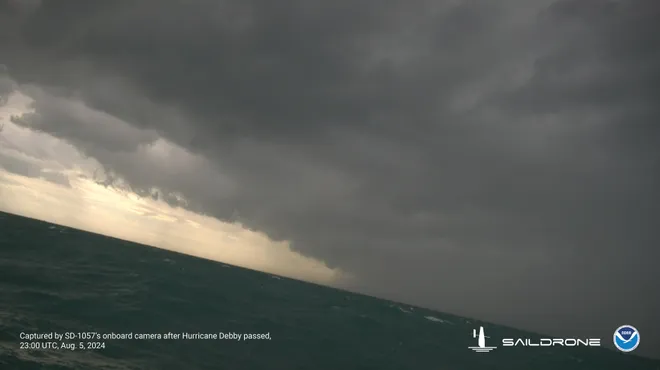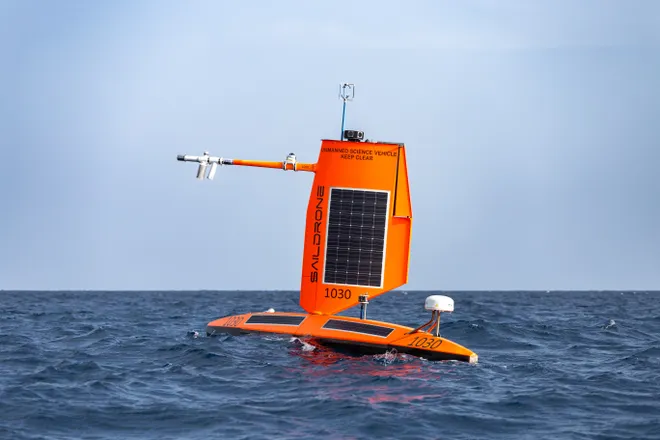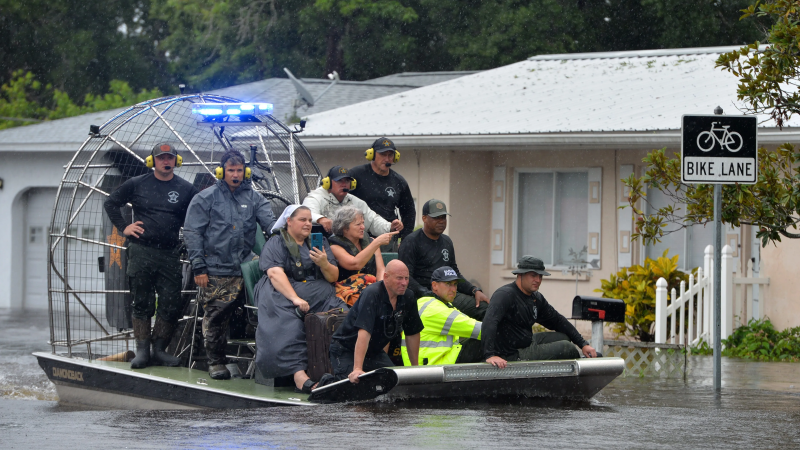Watch stunning drone footage from the eye of Hurricane Debby
Tropical Storm Debby, already the fourth named storm of the season, has caused major flooding and spawned multiple tornadoes as it continues its march through the Southeast, dumping enough rain to potentially beat out Harvey as the wettest landfall hurricane ever.
Debby originally formed in the Gulf of Mexico on Sunday before making landfall in Florida as a Category 1 hurricane around 7 a.m. Monday. The storm blew ashore near the town of Steinhatchee, Florida, with maximum sustained winds of 80 mph and was blamed in the deaths of at least four people. Debby moved across northern Florida for hours before being downgraded to a tropical storm on Monday afternoon, with wind speeds slowing to 65 mph.
It has since made a slow, methodical crawl, causing significant weather events through Georgia, South Carolina and North Carolina; flooding is expected to continue in mid-Atlantic states and southern New England through Sunday.
Before Debby even touched down in Florida, however, a drone had already ventured through raging sea waters right into the eye of the storm. The remotely controlled Saildrone Explorer drone is part of Saildrone's line of uncrewed surface vehicles (USVs), durable information-gathering machines that are piloted into storms with the help of the National Oceanic and Atmospheric Administration (NOAA).
Saildrone and NOAA officially launched their fourth mission to collect data on hurricane conditions just days before Debby formed, launching 12 unmanned vehicles stationed in six areas likely to see storm activity. One, called SD-1057, dove directly into Debby soon after its launch, sending back amazing video footage from the rolling waves.
Debby tracker:See tropical storm's path as states brace for more rain, flooding
What conditions did the Saildrone measure in Debby?

As the storm made its way to Florida, the newly-launched SD-1057 sailed through the eye of what was then Hurricane Debby hours before the storm made landfall in Florida on Aug. 5.
Video shows the drone being tossed around in rough water, at which point it recorded wind gusts of over 60 knots, or roughly 69 mph, and waves over five meters, or 16 feet, high.
Drone captures Beryl:As Hurricane Beryl tears through Caribbean, a drone sends back stunning footage
What are Saildrones and how do they track storms?

Saildrone and the NOAA have been launching USVs into hurricanes for four years, hoping to gather data that will offer insight into how major storms form, track and intensify.
The Saildrone Explorer USVs are 23 feet long and built to withstand winds over 110mph and waves over 50 feet tall, according to the company. Equipped with sensors to measure air, surface and water temperature, humidity, barometric pressure, wind speed and direction salinity and wave height, the USVs are set to sail autonomously along a predetermined route.
This year, scientists are hoping to gather more data on how salinity, or the amount of salt in water, affects how hurricanes develop and intensify. They are also looking to measure how much carbon dioxide the ocean is absorbing from or releasing into the atmosphere during a storm.

"It’s not known how hurricanes affect the exchange of CO2 between the ocean and the atmosphere and how that impacts the global carbon budget," said Greg Foltz, a NOAA oceanographer and one of the mission’s principal investigators, in a statement. "If we can get one of these two USVs into a major storm, it would give us some of the first direct measurements of air-sea CO2 exchange inside a hurricane,”
The current mission will last until October, during which time the USVs will remain at sea. Powered entirely by renewable wind and solar energy, data collected from USVs will be paired with information recorded by overflights by a NOAA Hurricane Hunter aircraft and gliders below the surface
Disclaimer: The copyright of this article belongs to the original author. Reposting this article is solely for the purpose of information dissemination and does not constitute any investment advice. If there is any infringement, please contact us immediately. We will make corrections or deletions as necessary. Thank you.






